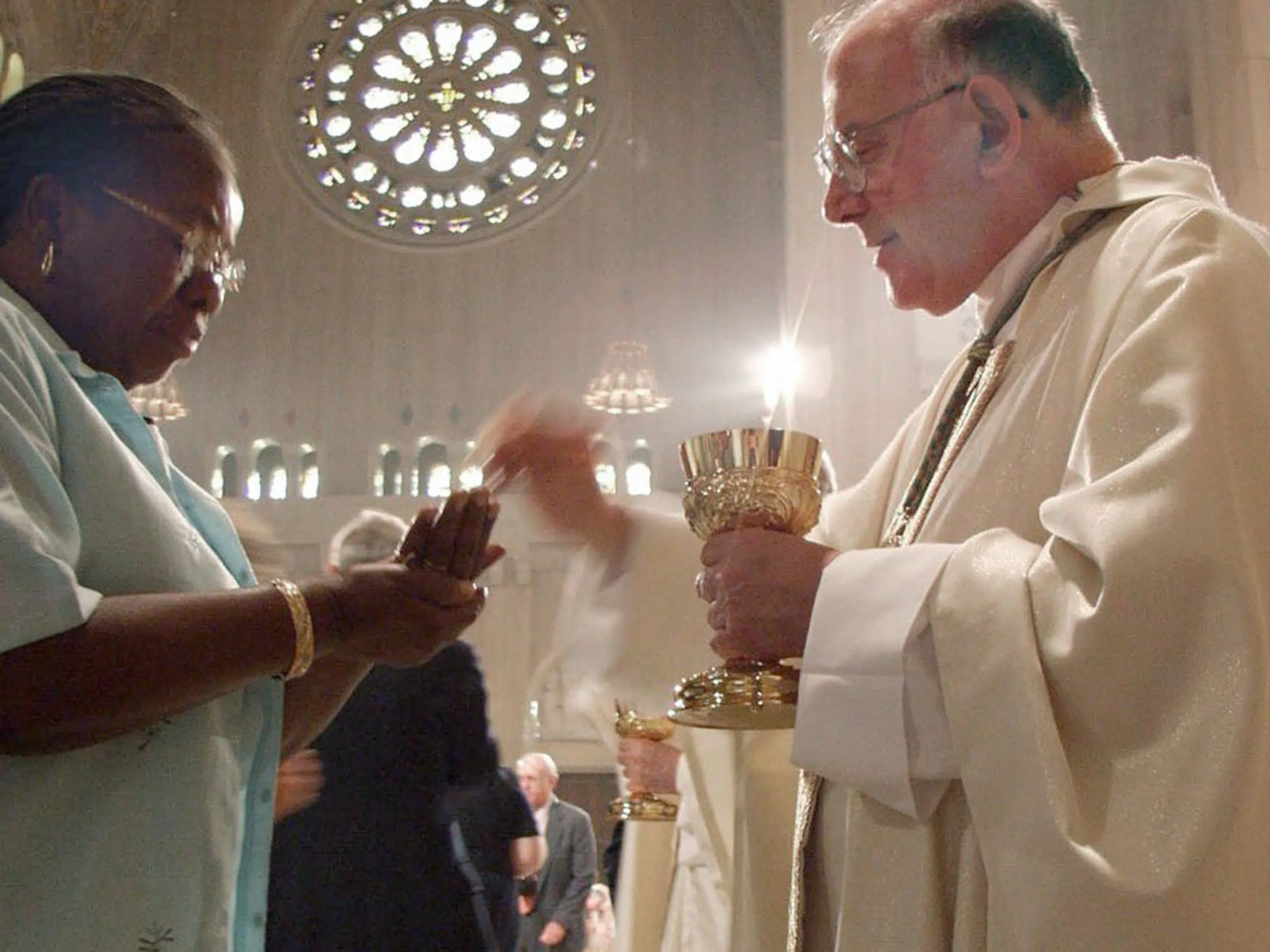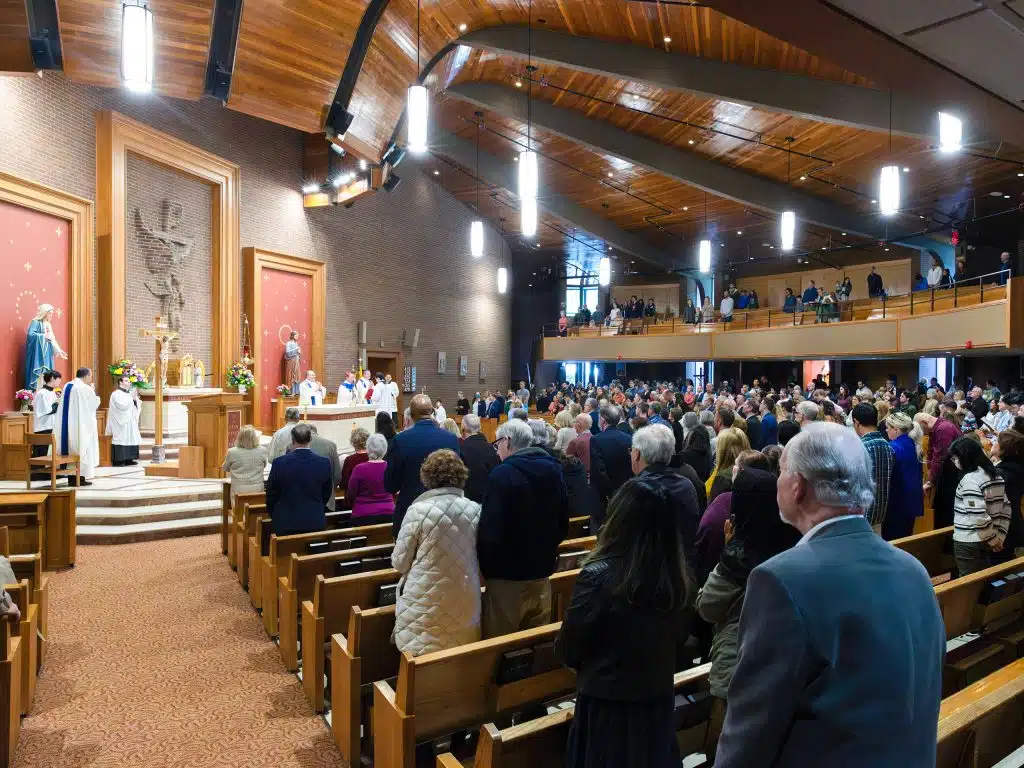With the solemnity of Corpus Christi approaching, I ask myself: How do I think of and treat the Blessed Sacrament? Here are what I call “The 10 commandments of reverence for the most Blessed Sacrament.”
- To attend Mass on Sundays and holy days of obligation. This serious obligation begins for children when they reach the “age of reason.” We adore the Eucharist by our full, active and conscious participation in the Mass.
- To prepare well for every Mass we attend. The holy sacrifice of the Mass is “Calvary perpetuated” because it is the representation of Christ’s sacrifice on Good Friday. We abstain from food and drink (medicine and water may be taken) for at least one hour before receiving Communion. We also confess to a priest within the context of Confession our mortal sins that we have not confessed before. (A mortal sin is a thought, word, desire or action that concerns grave matter with sufficient reflection and full consent of the will.) Those who are practicing Catholics and whose marriages are recognized as valid by the Catholic Church may approach the altar to receive the Savior. Frequent Confession of venial sins is highly encouraged.
- To demonstrate with our behavior that we believe in the Real Presence of Christ in the Eucharist. Whenever we enter or leave the church, we turn our glance to the tabernacle where Jesus is reposed and we genuflect (those who are physically unable to genuflect may bow). Our modest and decent dress (revealing clothes are inappropriate) demonstrates our faith in and adoration for the Eucharist. We avoid chewing gum in the church, and we use accurate language whenever speaking (and singing) of the Blessed Sacrament, thereby avoiding “bread” and “wine” to refer to the sacred species.
- To enjoy the silence to which the Eucharist beckons us. We maintain a respectful decorum in the presence of the Blessed Sacrament. Before, during and after Mass, we refrain from useless chattering before the tabernacle that destroys a golden occasion to learn at the feet of the master.
- To receive Communion with joy and fervor. The worthy reception of the body and blood of the Savior — the “taste” and the “pledge” of eternal life — impels us to be authentically charitable toward the needy, and it summons us to angelic chastity. We receive Jesus on our tongues or in our hands (a profound bow before receiving Communion is very appropriate), according to the local bishops’ conference. When we receive Jesus on our tongues, we say “Amen” and permit the priest to place Christ there. If we receive in the hand, then we make a throne for the Lord, placing our “stronger” hand on the bottom and our “weaker” hand on top. Proclaiming “Amen,” we receive the host (rather than lunging for it), take a step to the side, stop and place the host in our mouth using the stronger hand underneath. We must never receive the sacred host “on the run.” With what dignity, adoration and love should we receive the Son of God.
- To pass time with the Eucharistic Jesus outside of the Mass. The Eucharist is always to be adored. These precious moments with Jesus help to ensure that we will really be converted to him and be able to accept his plan for us.
- To make frequent spiritual Communions. This beloved practice in which we invite the Lord into our souls in a similar manner as when we sacramentally receive Communion should be encouraged as a frequent act of love and adoration.
- To cultivate a special relationship with Mary, the woman of the Eucharist. Mary, present with her divine son on Calvary, is present in some distinct way during each Mass. True veneration of Our Blessed Lady leads us infallibly to genuine adoration of the master.
- To develop a friendship with the saints who are remembered for their incredible love for the Blessed Sacrament. The history of the church is filled with men and women, boys and girls who loved, adored and even died for the Eucharist.
- To request the Mass to be offered for the living and the dead. Requesting Mass from a priest for a specific intention demonstrates one’s own faith in the power of the sacrifice of Calvary.
Our attitude of adoration for the king of kings present in the Blessed Sacrament compels us to respond to that alluring invitation: “Venite adoremus” — Come, let us adore him.
Msgr. Mangan is on the faculty of Mt. St. Mary’s Seminary in Emmitsburg.



The Good Shepherd